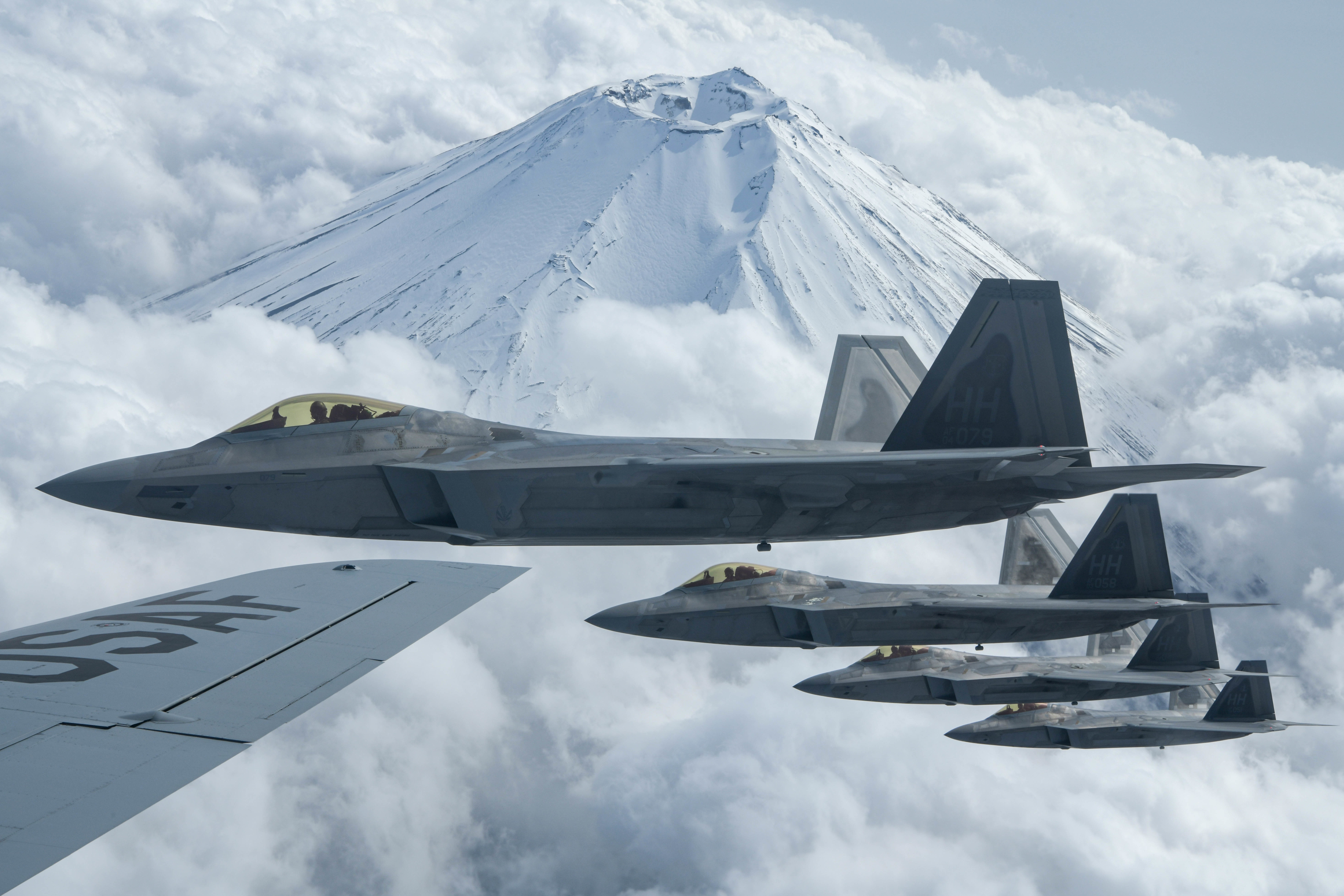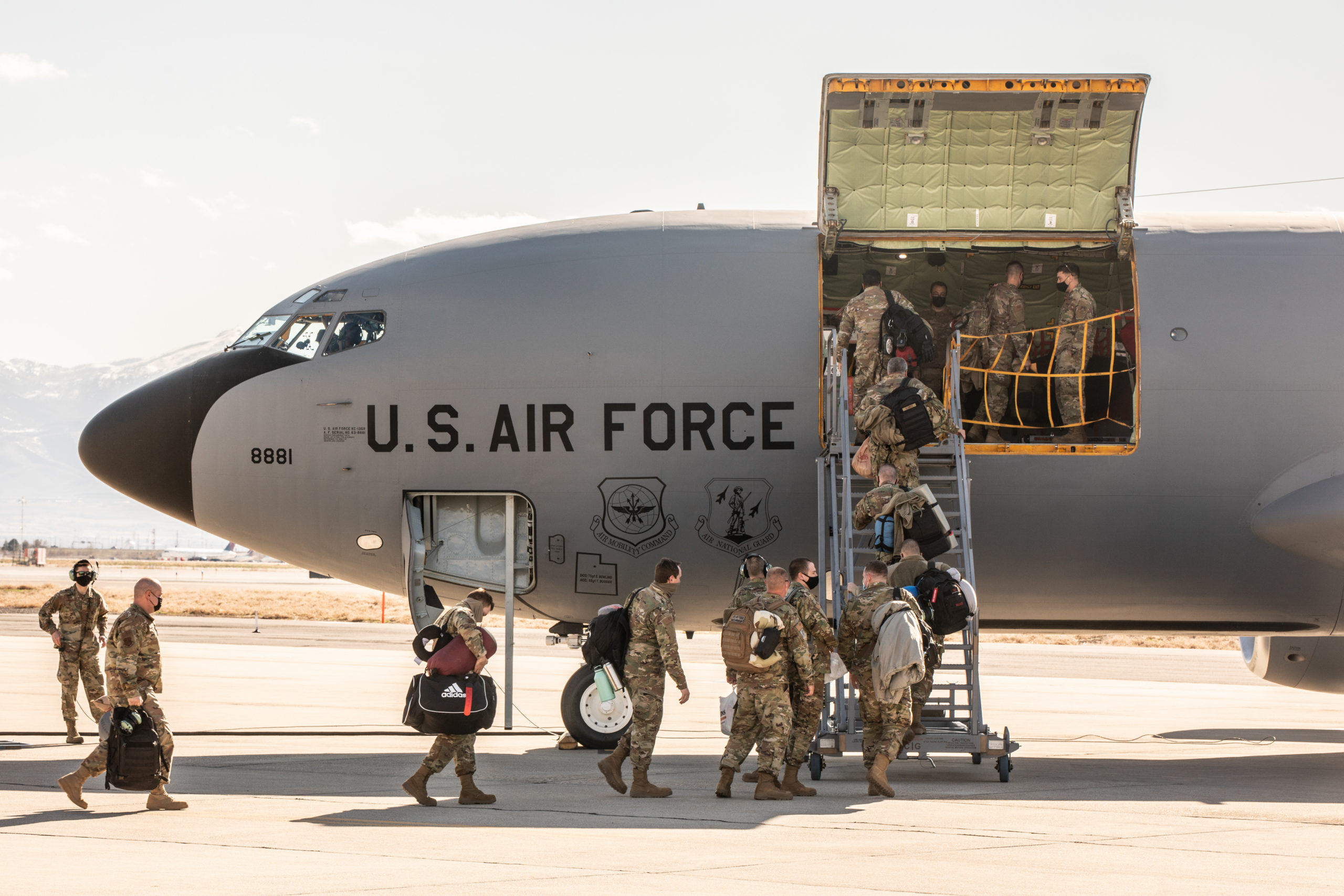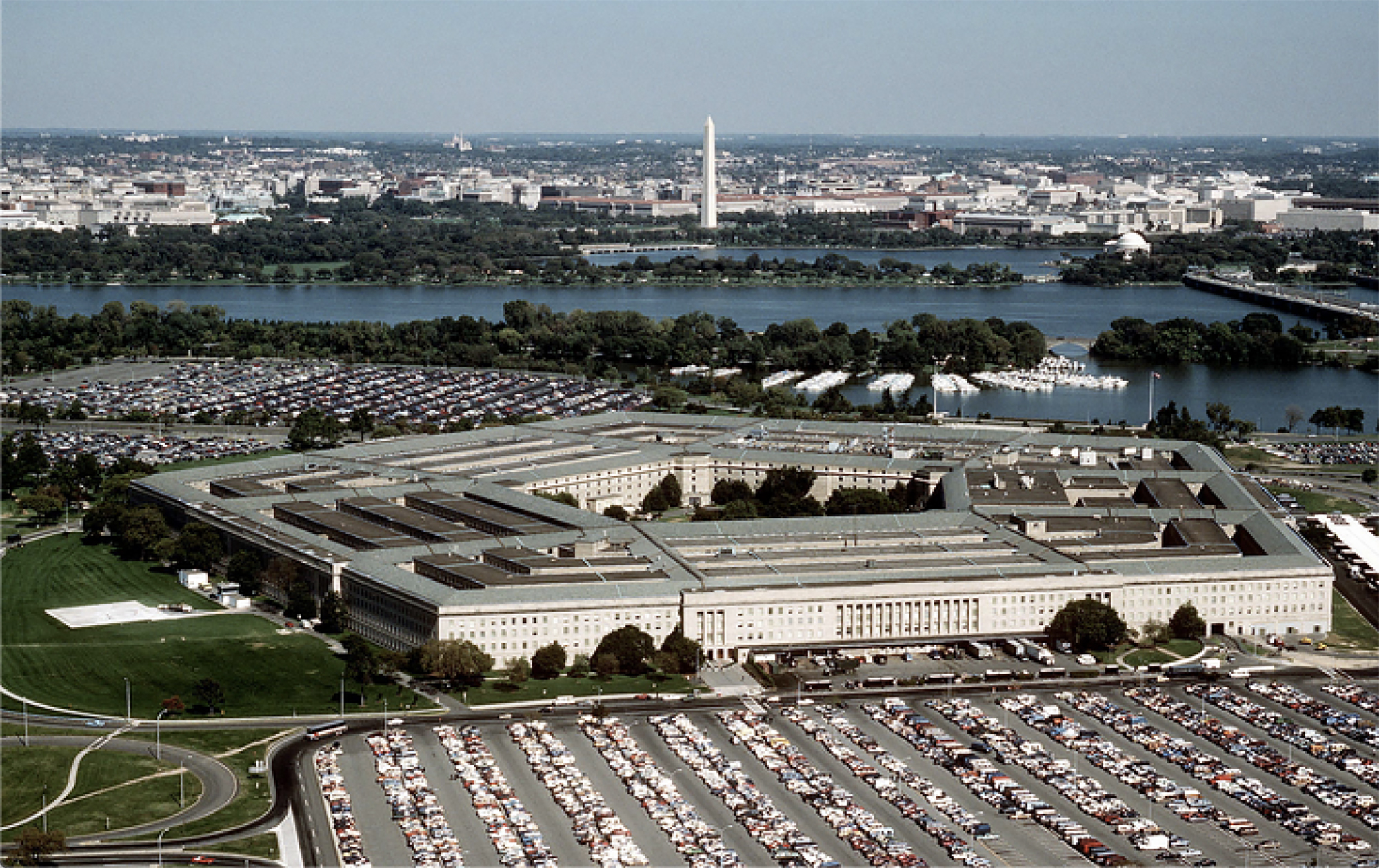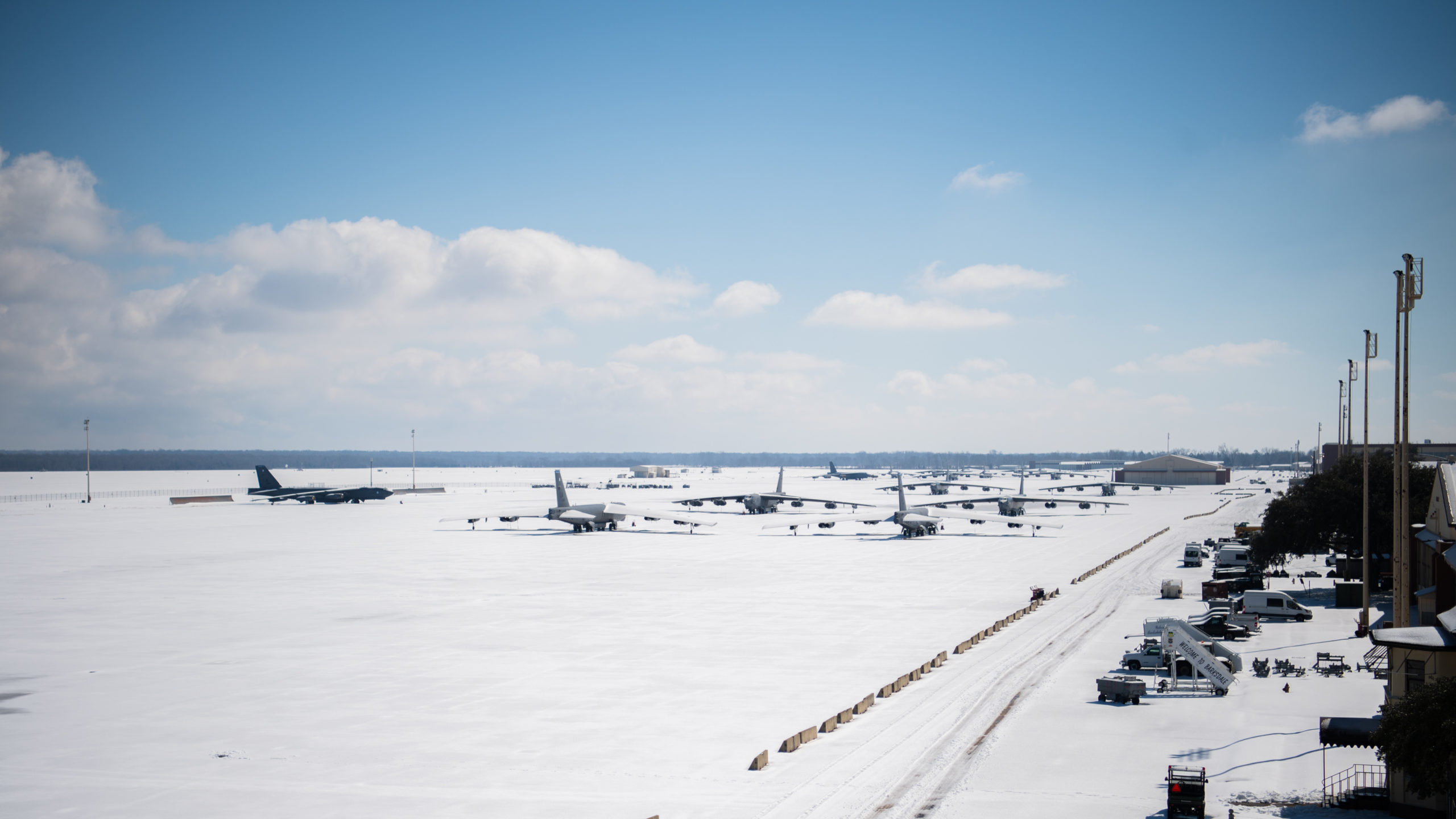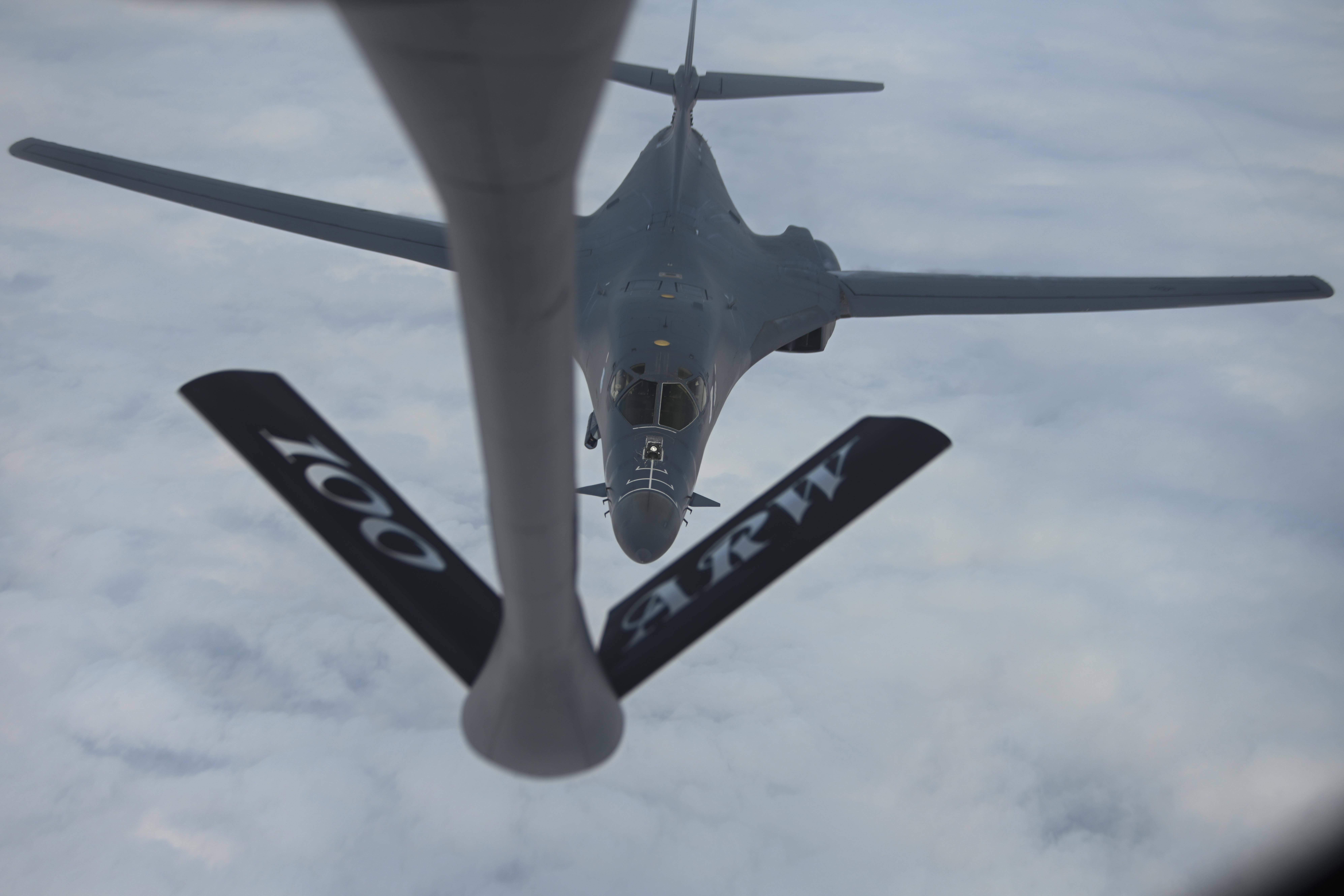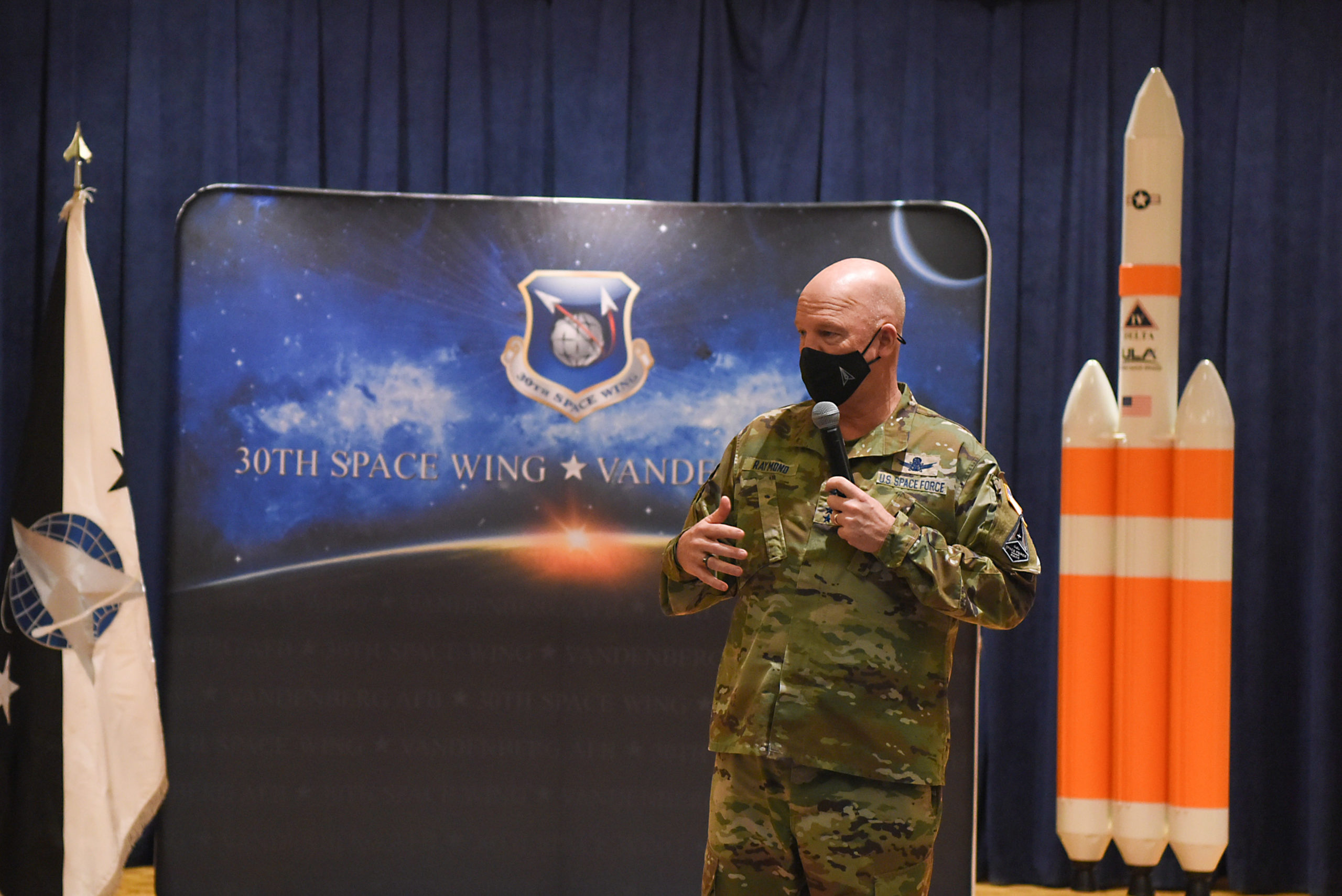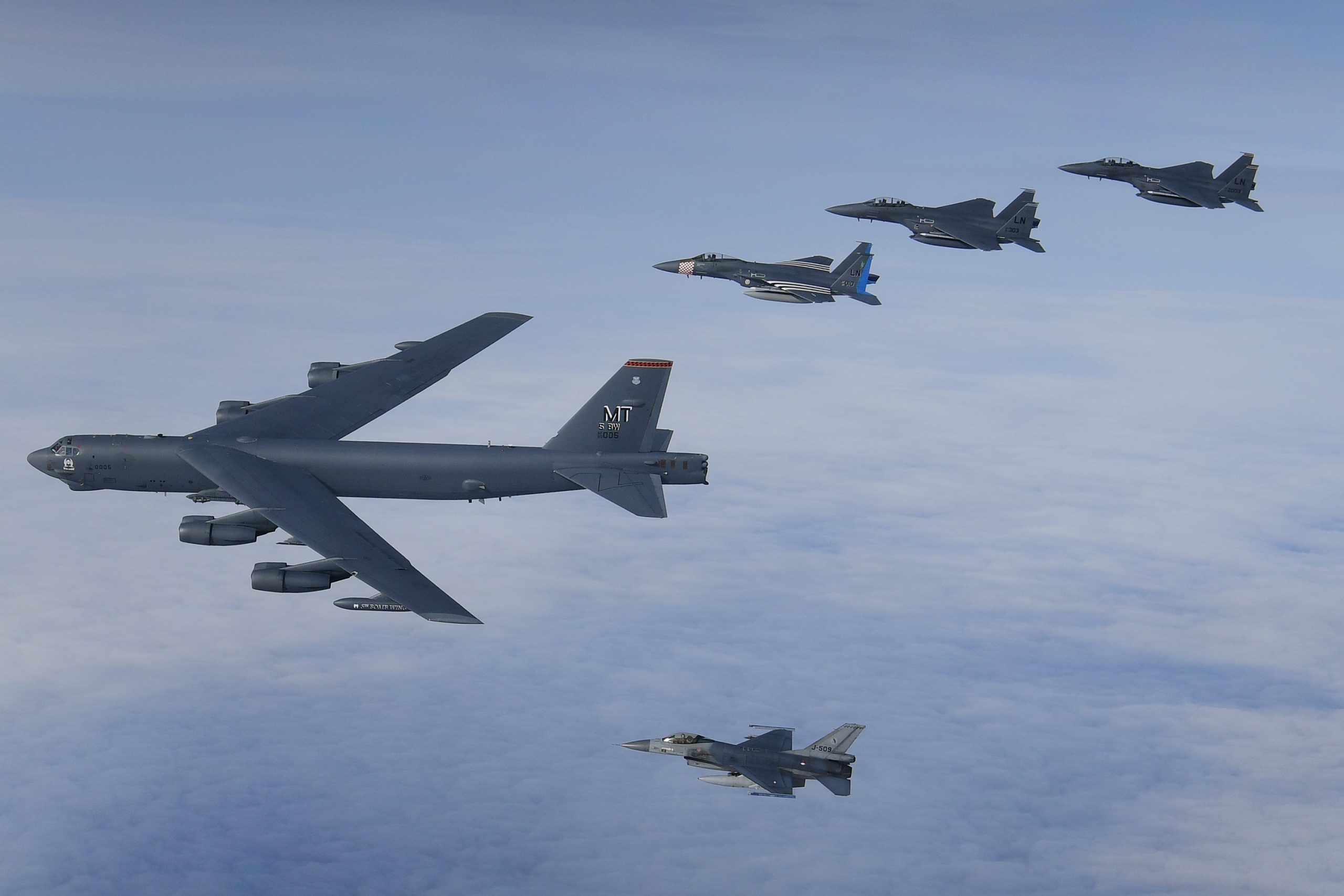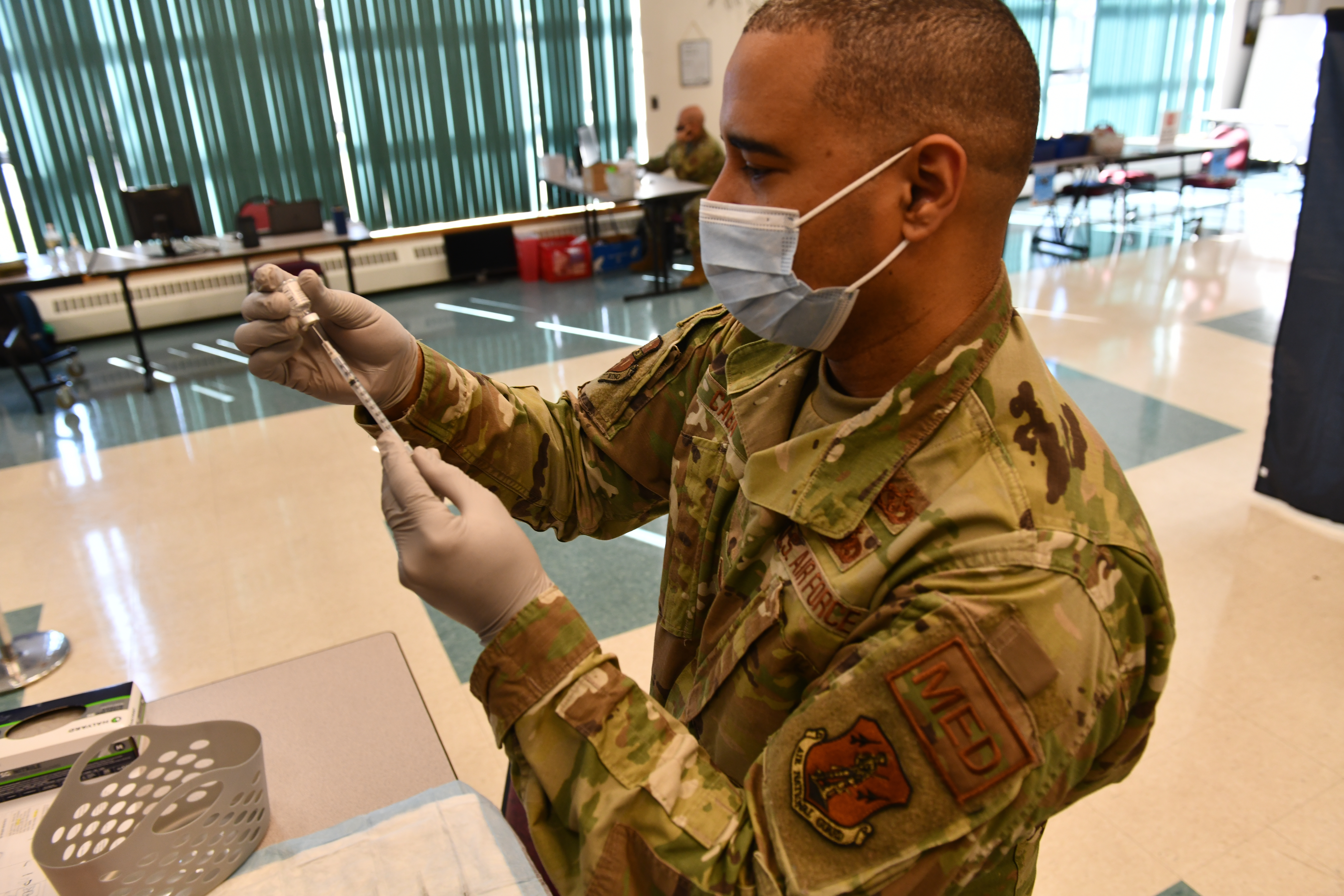F-22s and Airmen from Joint Base Pearl Harbor-Hickam, Hawaii, forward deployed to Japan for almost one month to train with Japanese and U.S. Marine Corps aircraft as part of a “dynamic force employment” operation.
The Raptors from the Active-duty 19th Fighter Squadron and Air National Guard 199th Fighter Squadron deployed to Marine Corps Air Station Iwakuni from March 12 through April 5.
The dynamic force employment model is designed for USAF aircraft to quickly deploy unannounced to operate from unpredictable locations.
“This [deployment] allows our pilots and maintainers to train alongside one another, learn and apply best practices, and ensure the joint force remains agile and responsive in the Pacific,” said USAF Lt. Col. Brian Nash, F-22 detachment commander at MCAS-Iwakuni, in a Pacific Air Forces release.
At Iwakuni, the F-22s were co-located with USMC F-35Bs.
“The presence of the U.S. Air Force’s F-22s here at Marine Corps Air Station Iwakuni provides a gainful opportunity for our F-35B pilots to practice joint integration between these two state-of-the-art aircraft,” said Lt. Col. Richard Behrmann, Marine Aircraft Group 12 operations officer, in a release. “Regular training and integration with joint service, partner and allied forces is one of the many ways that we maintain a high level of readiness and ensure that we can provide valuable contributions to maintaining a free and open Indo-Pacific region.”
